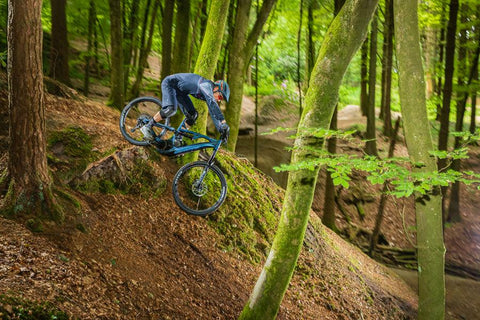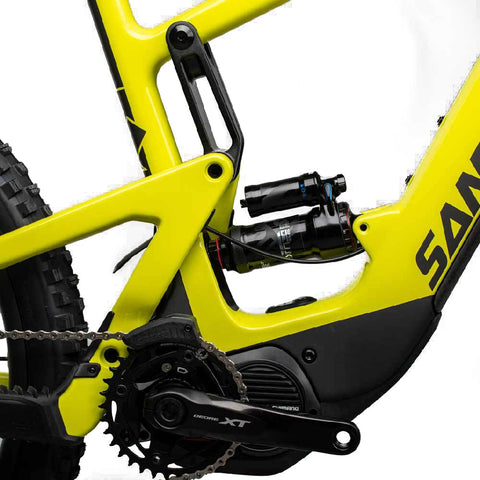e-Bike Settings
By now I think we can all agree e-Bikes are here to stay and whilst the commuter variant is a fairly simple affair, the progress we've seen in e-MTBs over the last few years is staggering.
e-Bike suspension is for all intents and purposes the same as its acoustic cousin, but there are some subtle differences when it comes to getting your suspension dialled in on your e-stead.
Let's take a look at the key things to consider when setting up your suspension on your e-bike.

What to remember
An e-Bike is obviously heavier, so that additional weight needs to be supported and controlled to ensure you don't ruin your ride.
Support
In comparison to a standard MTB, e-Mtb spring rates will be firmer. So that will lead us to higher pressures and firmer springs.
Although in terms of setting sag, it’s exactly the same – we’d recommend 20-25% on the fork and 30-35% on the shock, depending on manufacturer/model. So same procedure as standard MTB, you’ll just end up with higher pressures/spring rates to achieve the same sag figure.

Control
To prevent excessive dive, squat and wallowing that the weight and power of the ebike will induce, you need to run more LSC and LSR than a standard MTB. This will give you a more stable, predictable and efficient e-bike.
Just be careful on bikes without separate LSR and HSR that you don't get the rebound too slow that it doesn’t recover fast enough on repetitive hits, you may have to compromise somewhat.
So what About Long Travel?
Long travel (170mm+) e-Bikes, we recommend running a dual crown fork (much like the stunning Cannondale Moterra pictured below).
Firstly stiffness is very limited on single crown with so much leverage and so much momentum from the weight of the bike, it’s all getting transferred from the frame to the fork/front wheel by just depth of the crown.
This leads to the fork moving back and forth a huge amount in use, which plays havoc with steering feel and grip, not to mention reliability, as all too often the steerer tube will start to move in the crown. This starts with a creak and ends with the crown turning on the steerer tube, less than ideal!

With a dual crown fork, there is much more stiffness, which leads to better control, grip and reliability. The other benefit is more bushing overlap in the lower leg – this improves performance as it reduces friction when the fork is subject to a side load.
So under braking and on flat landings, the fork works much better.
Sorted
So there you have it, the basic principles remain the same, it's all about getting the right pressures and the correct rebound and compression settings to ensure your suspension works to its optimum level.
For more detailed settings or to have your bikes suspension tuned specifically for you and your riding style drop us an email or book in with us and see what difference we can make to your ride.
